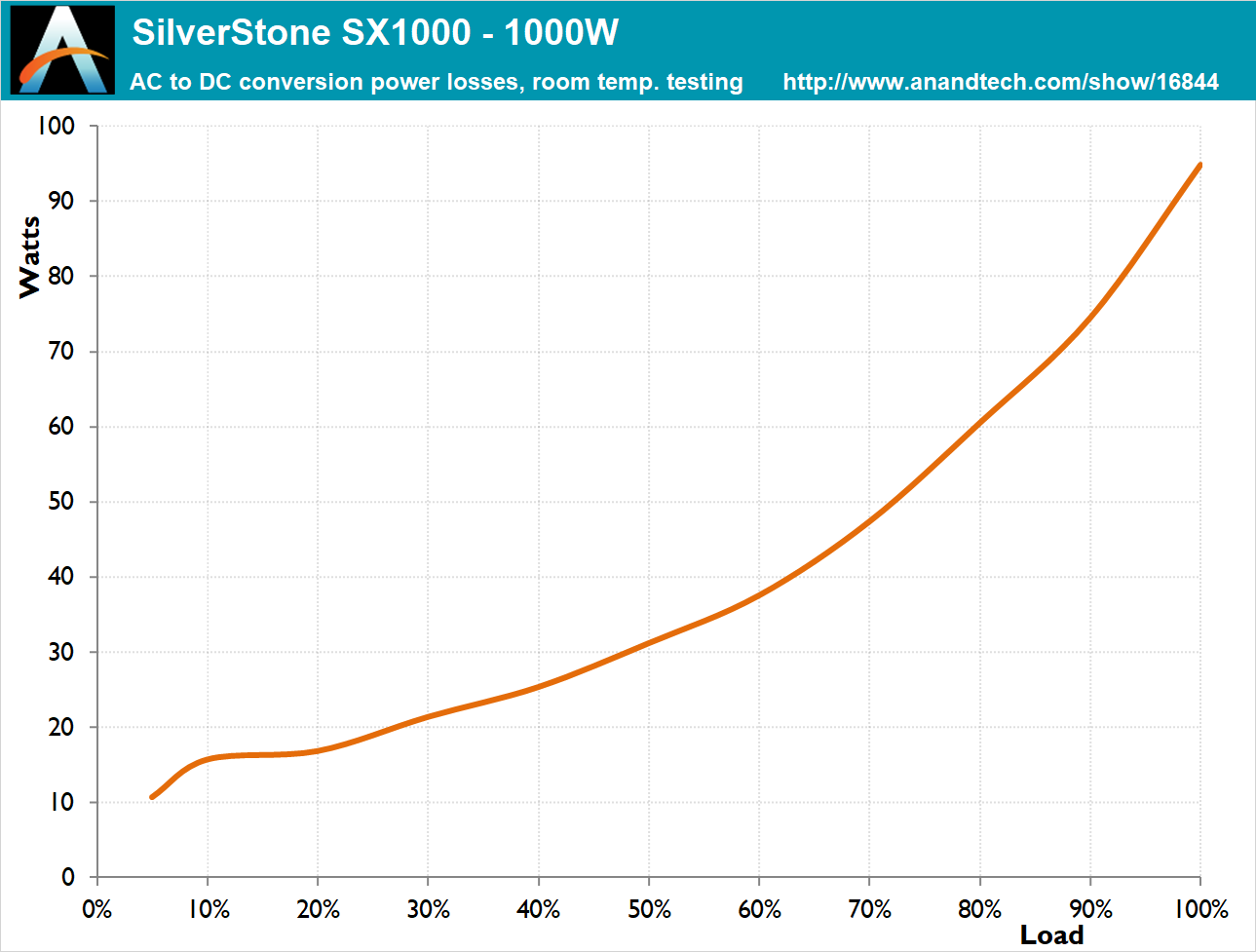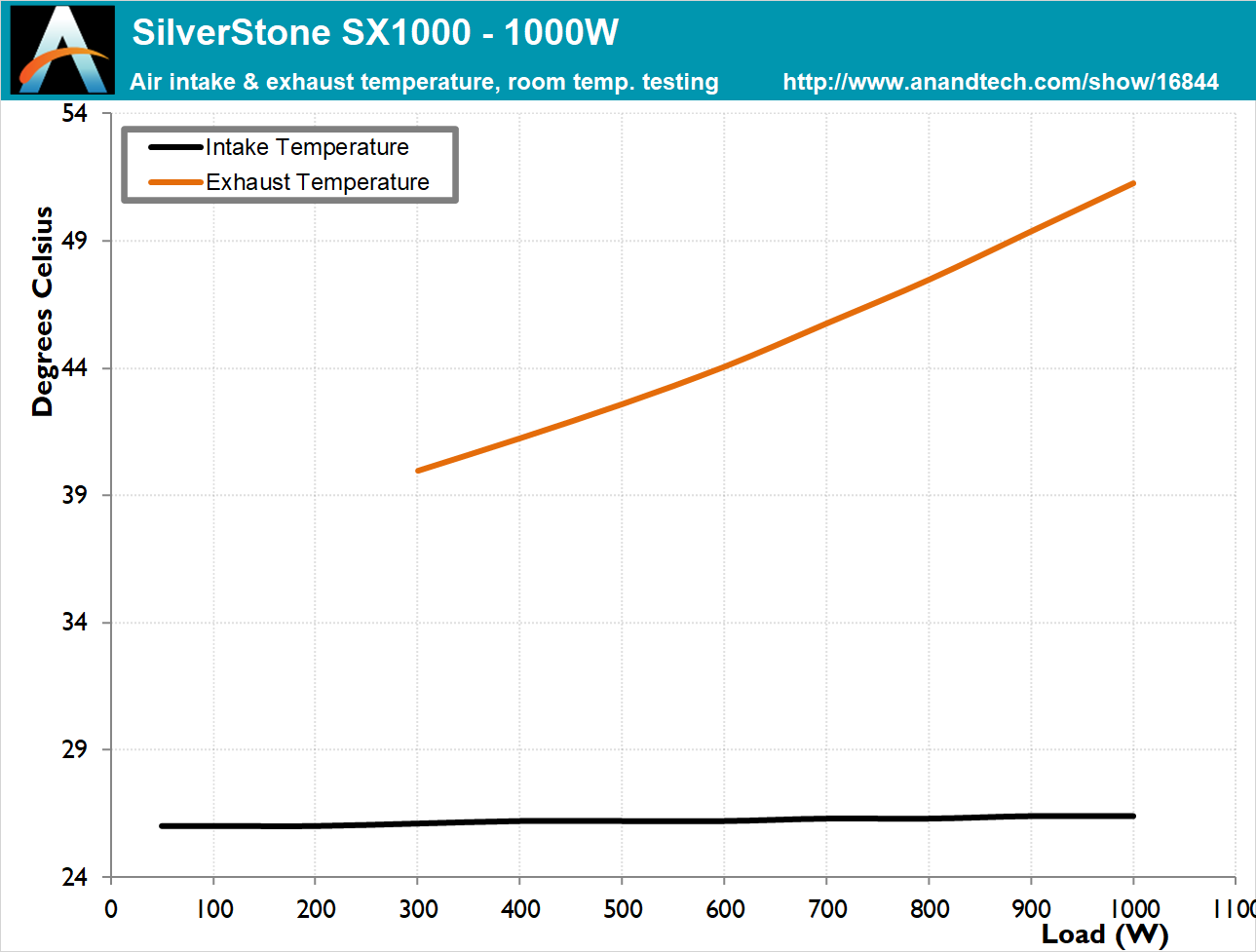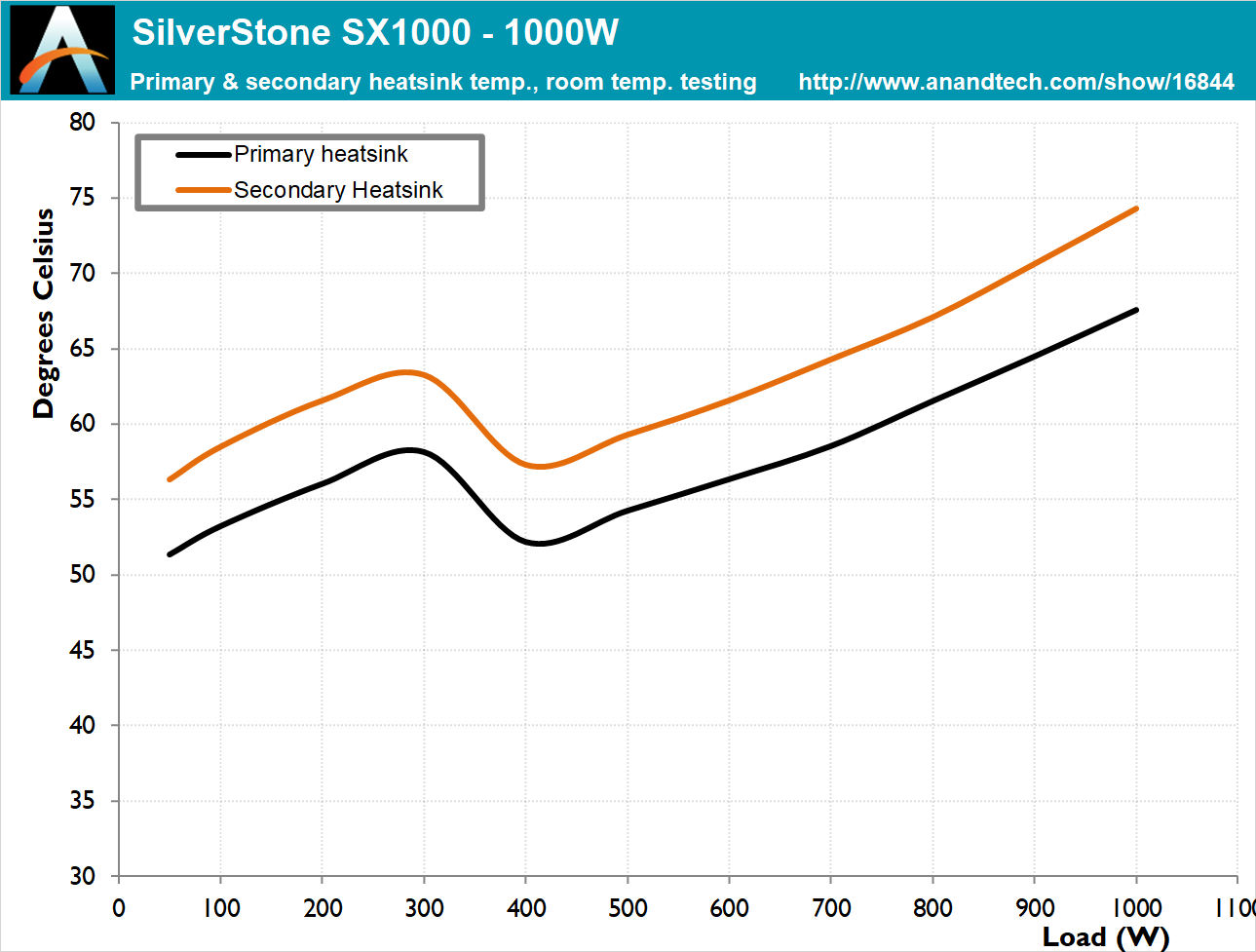The SilverStone SX1000 SFX-L 1 kW PSU Review: Big Power for Small Form Factors
by E. Fylladitakis on July 28, 2021 9:00 AM EST- Posted in
- Cases/Cooling/PSUs
- PSUs
- SilverStone
- SFX
- SFX-L
Cold Test Results (~25°C Ambient)
For the testing of PSUs, we are using high precision electronic loads with a maximum power draw of 2700 Watts, a Rigol DS5042M 40 MHz oscilloscope, an Extech 380803 power analyzer, two high precision UNI-T UT-325 digital thermometers, an Extech HD600 SPL meter, a self-designed hotbox and various other bits and parts. For a thorough explanation of our testing methodology and more details on our equipment, please refer to our How We Test PSUs - 2014 Pipeline post.
True to its specifications, the SilverStone SX1000 easily reached 80Plus Platinum efficiency levels while operating with a 115 VAC input. The increase in efficiency that switching to a 230 VAC input offers is measurable, but it would not be enough to grant the SΧ1000 an 80Plus Platinum certification, as the efficiency at 50% load did not surpass 94% as required by the protocol. Nevertheless, the efficiency figures are very good by any standard.
With that said, there is still significant room for improvement on the lower end of the curve, as the efficiency drops very sharply when the load is lower than 7-8% of the unit’s rated capacity. This is a small fraction of the PSU's total output, but still a significant amount of power on an absolute basis thnaks to the unit's high output.
SilverStone designed the SX1000 to be semi-fanless, i.e., the fan only spins when the load or temperatures are high enough to necessitate it. 80Plus Platinum units are efficient enough to operate in fanless mode until the load reaches several hundred Watts. The SX1000 was true to that rule, starting its fan when the load reached 300 Watts and remained this high for a few minutes. That is high enough to ensure that the fan will never spin when the system is idling or performing simple tasks.
Because the thermal circuit only starts the fan when the load is 300 Watts or greater, there's a fairly narrow window where the fan remains relatively quiet. If the load exceeds 500 Watts, the tiny heatsinks of the SX1000 cannot cope with the thermal losses and the demand for cooling falls upon the low-profile fan, which will keep increasing its speed in order to maintain the internal temperatures of the PSU within safe levels. The fan reached its maximum speed with a 90% load, while the SX1000 was operating unobstructed and in a room temperature environment.















37 Comments
View All Comments
shabby - Wednesday, July 28, 2021 - link
6 pci-e 8pin = 900 watts, that leaves 100 watts for the cpu? 🤔Charlie22911 - Wednesday, July 28, 2021 - link
That’s not how modern mono-rail PSUs work, the 12v power rail is shared between all of the 12v connectors. Theoretically you could draw the full rated load from just the CPU connector… until the wires melt.shabby - Wednesday, July 28, 2021 - link
Yes yes that I know, it just seems that you can fully utilize all the connectors at full load.shabby - Wednesday, July 28, 2021 - link
Can't... wheres that edit button!DanNeely - Thursday, July 29, 2021 - link
That's the case with essentially every PSU with more than one output because real world scenarios essentially never max the draw on every output at once. A PSU designed to be able to do that would have a headline number that was impossible to achieve in the real world at a much higher cost. This is especially the case with the PCIe connectors; where the number of connectors needs to be high enough to handle older cards using multiple 6 pin/75W plugs; but spending the extra few cents to make them all 6+2 connectors to facilitate maximum flexibility in wiring for newer cards using 8pin/150W ones makes it much more usable for consumers.meacupla - Wednesday, July 28, 2021 - link
Is anandtech capable of testing transient loads?I have heard that SFX sized PSUs don't respond as well to transient loads when compared to ATX sized PSUs. That you should get a higher wattage SFX PSU to compensate for this. Is there any truth to this?
DanNeely - Wednesday, July 28, 2021 - link
As badly as the small form factor hurt cooling at high loads and as loud as the fan gets it's a shame they didn't go for an 80+ Titanium spec design. In most cases the price penalty isn't worth it unless you're using very expensive power; but here shaving a a few dozen extra watts of waste heat off would significantly extend the quiet fan range.supdawgwtfd - Thursday, July 29, 2021 - link
It could be extra capacitors killing the power efficiency but as has been mentioned help transient loads.Just pure shit talking though.
Leeea - Wednesday, July 28, 2021 - link
Small form factor is just not worth the compromise.Wereweeb - Wednesday, July 28, 2021 - link
For you*